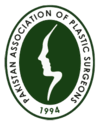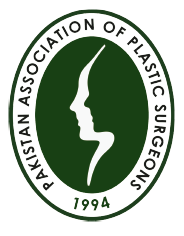Public Information Hub
About Us
Welcome to the Pakistan Association of Plastic Surgeons
The Pakistan Association of Plastic Surgeons (PAPS), established in 1994, proudly stands as the authoritative voice of plastic surgery in Pakistan. We are committed to advancing education across the breadth of the specialty and fostering an understanding of contemporary practices through innovation and excellence.
The Pakistan Association of Plastic Surgeons (PAPS) is the leading organization representing plastic surgeons in Pakistan. We are dedicated to:
Advancing the field of plastic surgery: We strive to improve the education, training, and practice of plastic surgery in Pakistan by organizing workshops, conferences, and educational programs.
Promoting ethical and high-quality patient care: We uphold the highest ethical standards and advocate for patient safety and well-being.
Raising public awareness: We aim to educate the public about the diverse aspects of plastic surgery, both reconstructive and aesthetic, and dispel any myths or misconceptions.
Our History
Founded in 1994, PAPS has a long and distinguished history of serving the needs of both plastic surgeons and the public in Pakistan. We are committed to upholding the legacy of our founding members by continuously striving for excellence in the field.
Our Vision
We envision a future where Pakistan has a thriving community of highly skilled and ethical plastic surgeons providing exceptional care to patients across the country.
Our mission
To achieve our vision, PAPS focuses on:
Collaboration: Working closely with other healthcare organizations, government bodies, and international partners to promote the advancement of plastic surgery in Pakistan.
Professional Development: Offering ongoing training and educational opportunities for plastic surgeons to ensure they stay at the forefront of the field.
Ethical Practice: Upholding ethical principles and promoting responsible and safe practices within the field of plastic surgery.
Public Service: Providing the public with accurate information about plastic surgery and advocating for access to quality care.
How We Operate
Democratic and Member-Centric
PAPS operates as a democratic, membership-based organization for Plastic Surgeons practicing in Pakistan. Governed by an elected council, and a board of trustees, our organization exists to elevate the professional specialization of plastic surgery, promoting innovation and understanding within the field.
Committees and Special Interest Groups
In addition to our elected officers and council, PAPS boasts various committees supporting essential functions, such as education, bylaws, nominations, international affairs, and ethics. The Educational Foundation of PAPS, our dedicated education committee, plays a crucial role in advancing educational initiatives. These committees, along with our esteemed board of trustees, work collaboratively to steer the organization’s mission. All members actively contribute to the organization, bringing diverse perspectives and expertise to the table.
Advocacy and Representation
PAPS members play a vital role in representing the specialty of plastic surgery on various bodies, furthering collaboration with other surgical specialties, engaging in research interests, and contributing to charitable organizations. Our goal is to establish plastic surgeons as integral members of multidisciplinary care teams, providing specialist care for a diverse range of conditions.
Advancing Education and Innovation
Scientific Meetings, Courses, and Awards
PAPS is committed to advancing education and innovation within the specialty. We organize annual scientific meetings, training courses, and workshops for our members. These initiatives not only enhance the professional development of plastic surgeons but also raise awareness among wider healthcare professionals.
Journal of Pakistan Association of Plastic Surgeons (JPAPS)
Our flagship publication, the Journal of Pakistan Association of Plastic Surgeons (JPAPS), is dedicated to publishing original research, educational material, and information on all aspects of reconstructive and cosmetic plastic surgery. PAPS members actively contribute to the journal, making it a leading publication in the professional specialty.
Our Members
PAPS is comprised of a dedicated community of highly qualified and ethical plastic surgeons who are committed to providing exceptional care to their patients. We are proud to represent their expertise and dedication to the field.
Join Us
We invite all plastic surgeons in Pakistan to become members of PAPS and contribute to our collective effort to raise the standards of care and promote the advancement of the field in Pakistan.

